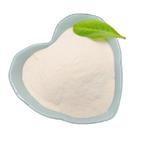What is the drug glycopyrrolate used for?
Mar 18,2024
Description
Glycopyrrolate (pyrrolidinium 3-[ (cyclopentylhydroxy/phenylacetyl)oxyl]-1,l-dimethyl bromide; glycopyrronium bromide; Robinul) is a quaternary ammonium anticholinergic drug. Originally synthesised in 1960, it was extensively used in the 1960s for the treatment of peptic ulceration.

Uses
Glycopyrrolate has been widely used as a preoperative medication to inhibit salivary gland and respiratory secretions. The most frequent reasons for administering anticholinergics include producing an antisialagogue effect, creating a sedative and amnesic effect, and preventing reflex bradycardia. Glycopyrrolate is among the more common anticholinergic medications. It is used perioperatively as a muscarinic receptor antagonist.
Glycopyrrolate is used to treat peptic ulcers in adults. Stomach ulcers occurs when gastric acid eats away at your protective stomach lining. The acid creates open sores that can bleed and cause stomach pain. This drug is also used in combination with other medications to treat ulcers in adults and children 12 years of age and older. Glycopyrrolate (Cuvposa) is used to reduce saliva and drooling in children between 3 and16 years of age that have certain medical conditions that cause drooling. It is in a class of medications called anticholinergics. It decreases stomach acid and saliva production by blocking the activity of a certain natural substance in the body.
Mechenism of action
Glycopyrrolate, like other anticholinergic agents, inhibits the action of acetylcholine on structures innervated by postganglionic cholinergic nerves and on smooth muscles that respond to acetylcholine. It protects against the peripheral muscarinic effects (e.g. bradycardia and excessive secretions) of cholinergic agents such as neostigmine and pyridostigmine given to reverse the neuromuscular blockade due to non-depolarising muscle relaxants.
References
[1] R. K. MIRAKHUR, J. W. DUNDEE. “Glycopyrrolate: pharmacology and clinical use.” Anaesthesia 38 12 (1983): 1195–1204.
[2] Monika Chabicovsky . “Pharmacology, toxicology and clinical safety of glycopyrrolate.” Toxicology and applied pharmacology 370 (2019): Pages 154-169.
- Related articles
- Related Qustion
- Side effects of Glycopyrrolate Feb 18, 2022
Glycopyrronium bromide is a quaternary amine with similar anticholinergic actions to atropine but without central effects because it is a quaternary amine and does not cross the blood–brain barrier. It is used as an alternative to atropine
Donepezil hydrochloride is a potent inhibitor of acetylcholinesterase, showing enhanced potency through specific structural features and exhibiting significant neurochemical pharmacology.....
Mar 18,2024APIALC-0315, also known as ((4-hydroxybutyl)azanediyl)bis(hexane-6,1-diyl)bis(2-hexyldecanoate), is an ionisable amino lipid.....
Mar 18,2024Biochemical EngineeringGlycopyrrolate
596-51-0You may like
- Glycopyrrolate
-

- $0.00 / 1KG
- 2024-05-29
- CAS:596-51-0
- Min. Order: 1KG
- Purity: 99
- Supply Ability: 50000tons
- Glycopyrrolate Bromide
-

- $200.00 / 1g
- 2024-04-30
- CAS:596-51-0
- Min. Order: 1g
- Purity: 99%
- Supply Ability: 200kg per month
- Glycopyrrolate
-

- $10.00 / 1kg
- 2024-04-02
- CAS:596-51-0
- Min. Order: 1kg
- Purity: 99%
- Supply Ability: 5000 MT/Month




